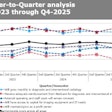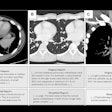The independent dispute resolution (IDR) process would be financially impractical for many out-of-network claims for radiologists, according to research published January 17 in the American Journal of Roentgenology.
A team led by Eric Christensen, PhD, from the Neiman Health Policy Institute in Reston, VA, found in its study of this part of the No Surprises Act that the potential balance payment would be more than 2024 IDR fees for between 32% and 55% of out-of-network claims for radiologists. This means that payment would exceed the expected breakeven point based on maximal recovery of the full difference.
“Lack of financial viability for the IDR process limits clinicians’ opportunities to dispute payer-determined payments and potentially undermines their bargaining power in insurer contract negotiations,” Christensen and co-authors wrote.
The federal No Surprises Act aims to eliminate surprise medical billing for out-of-network care for circumstances outside the control of patients. Part of the act is the IDR process, which is intended to settle clinician-payer payment disputes for out-of-network care.
The Christensen team studied the fraction of out-of-network claims that radiologists and other hospital-based specialists can expect to at least break even with when payer-determined payments are challenged through the IDR process. Its goal was to find out whether IDR process has financial viability.
The researchers gathered claims data from a national commercial database (Clinformatics Data Mart Database, Optum) for hospital-based specialties occurring on the same day as in-network emergency department visits or inpatient stays from 2017 to 2021. From there, they simulated out-of-network claims using IDR rules.
They also determined whether the percentage of claims that the maximum potential payment, and one-quarter of this amount, would exceed IDR fees. To do this, the researchers used $150 and $450 fee thresholds to measure the range of final 2024 IDR fees. They measured one-quarter of the amount because receiving the maximum potential payment amount would be unrealistic, the researchers noted.
The team included data from 1,482,973 out-of-network claims. It found that the maximum potential payment exceeded fee thresholds of $150 and $450 for 55% and 32.1% of batched out-of-network claims for radiologists, respectively.
Additionally, payment exceeded fee thresholds for 76.8% and 61.3% of batched out-of-network claims for all other hospital-based specialties combined, respectively.
When measuring payment at one-quarter of that amount, the researchers reported that these values were 26.9% and 10.6%, respectively, for radiologists. For all other hospital-based specialties combined, the values were 56.6% and 38.4%, respectively.
The study authors wrote that while the No Surprises Act authorized patient protections, IDR fees “limit clinicians' opportunities to dispute payer-determined payments and potentially undermine their bargaining power in contract negotiations.”
“As a result of current IDR rulemaking, entry into the IDR process would result in further loss and not make financial sense for clinicians in most instances,” they added. “Thus, insurers have low risk in entering a dispute, undermining clinicians’ bargaining power in insurance contract negotiations.”
“Therefore, IDR rulemaking may negatively impact patient access to in-network care,” the authors concluded.
The study can be found in its entirety here.



















